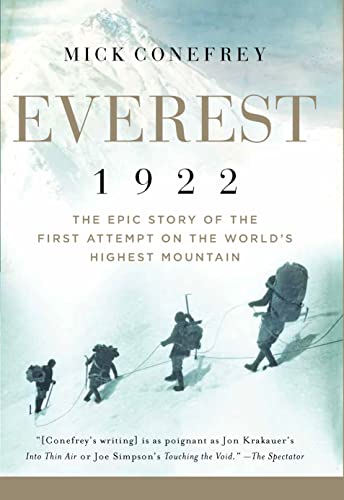Everest 1922: The Epic Story of the First Attempt on the World’s Highest Mountain
In the 1920s, little was known about Mount Everest. In the mid-1800s, distant observations and mathematical calculations identified it as the world’s tallest peak at some 29,000 feet. But ways to navigate the area surrounding the mountain, geographically, geologically, and politically—let alone plot an approach to the summit—were virgin territory. Everest 1922 enters that territory to describe the first expedition to map the terrain, gather teams of climbers and Sherpas, make three attempts to summit, and very nearly turn George Mallory’s name into a household word.
As author Conefrey points out, the 1922 expedition has been largely forgotten, overshadowed by other climbs such as one from which George Mallory did not return in 1924, the first full ascent by Edmund Hillary and Tenzing Norgay in 1953, and the so-called 1996 Mount Everest disaster during which eight climbers died. Yet the initial assault on the mountain is notable not only because it took first steps, but also because it inaugurated “siege-style” mountaineering involving a series of camp sites at various elevations and large teams of support personnel and introduced the use of oxygen at high altitudes.
Conefrey is an award-winning author and documentary filmmaker. Previous books include Everest 1953 and Ghosts of K2, detailing the first successful summits of the two mountains. Typical of work by an experienced writer who is also comfortable in crampons and spikes, Everest 1922 is authoritative, highlighting small but aggravating conditions, such as frozen-solid cans of spaghetti, as well as the sudden rise of life-threatening winds and storms. A dramatic, often breathtaking ascent.










